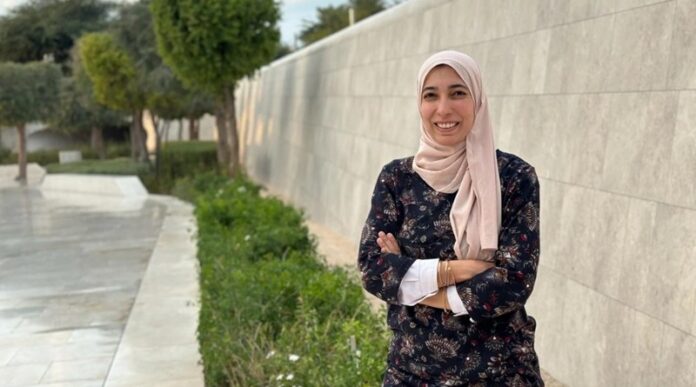Salma, what inspired your interest in place branding within the context of Egypt and the broader Arab world, especially for district branding?
Initially, as an urban researcher, I was interested in the topic of urban social justice within the same city. During my previous research, I noticed the stark asymmetry between different districts within a city, leading to varying life chances for residents residing in different districts. In line with this, I noticed that some places are heavily branded and receive significant economic and social opportunities, while others are neglected.
This realisation triggered my interest in place branding and particularly in branding districts. I aim to adopt an approach that focuses on branding districts. Rather than focusing solely on branding a city as a whole, I believe in branding districts separately. This approach allows each district to thrive individually under the umbrella of the larger city. It also diversifies the potential offerings of a city, giving each district an equal chance to showcase its unique qualities and potentials.
I strongly believe in providing equal opportunities for all places to be showcased and emphasise their potential.
District branding focuses on the intimate places where residents interact, live and connect within a city. This approach offers opportunities for a wider range of locations, rather than relying on a single overarching brand for an entire city. That can achieve greater sustainability and fairness within a city.
How do the benefits of district branding manifest uniquely in the Arab world, including Egypt?
I believe that district branding holds significant potential, particularly in historic and ancient cities, both within and outside the Arab world. Cities with rich layers of history, such as Cairo, my hometown, serve as an open history book, with each district representing a distinct era of historic events. While these events have profoundly shaped these places, both tangibly and intangibly, shifting the focus to district branding in Cairo, for example, would enrich its different districts and enhance their unique identities.
Could you share specific challenges and opportunities in branding districts in Egypt and the Arab world?
I observe three main challenges:
- Involving stakeholders: The involvement of various stakeholders, including the local government, residents, branding experts, investors, and others, poses the primary challenge. Reaching a common ground that satisfies the interests and needs of all stakeholders is crucial.
- Sustaining brand identity: Maintaining the manifestation and identity of a brand over time is another challenge. This is why I advocate for more focus on district branding. By branding small-scale places, we can ensure better representation, involvement, and a sense of belonging for all stakeholders, leading to the long-term sustainability of the brand.
- Multifunctional nature of place branding: Place branding is a multifaceted field encompassing various disciplines, such as marketing, media and communication, urban design, and tourism. While this multidisciplinary nature presents opportunities for growth and diverse contributions and gives a chance to flourish outside the boundary of one discipline, it also poses a challenge in terms of finding a common language and establishing consensus among different fields and perspectives.
How do you integrate Egyptian and Arab cultural elements into your place branding strategies?
I believe that the integration of Egyptian and Arab cultural elements can be achieved by actively involving residents in every step of the branding strategies. By listening to their perspectives and addressing their root needs, we can ensure that the branding strategies truly reflect the cultural richness and aspirations of the local community.
How can place branding contribute to sustainability and community development?
By focusing on small-scale districts, the place brand becomes deeply rooted in the individuals directly connected to the place. This approach leads to a more realistic, grounded, and sustainable place brand that fosters community development. It allows for the active participation of residents, ensuring that their needs and aspirations are considered, and ultimately contributes to the long-term sustainability of a brand.
In your view, how can platforms like TPBO enhance the understanding and application of place branding?
Personally, I have been familiar with the Place Brand Observer since my early research on place branding. This platform has greatly facilitated the communication of concepts and ideas in a simple and direct manner. I consider it an incredibly informative platform that enables people to expand their knowledge and understanding in the field of place branding.
I believe that The Place Brand Observer plays a vital role in nurturing and supporting scholars and practitioners who are dedicated to advancing the field of effective place branding practices.
What are your visions for the future of place branding in Egypt and the broader Arab world?
My vision is a more enriched place branding practice in Egypt and the Arab world. I envision a future where place branding is deeply integrated into various educational curricula. This integration will ensure that the principles and methodologies of place branding are taught and understood from an early stage, cultivating a new generation of professionals well-versed in effective place branding strategies.
To realise this vision, I am committed to investing in education and research. Through collaborative efforts between academia, research, and practical implementation, we can bridge the existing gap between the local community, the local government, and the theories and practices of place branding.
This collaborative approach requires active engagement from both academia and the practical side, recognizing the importance of mutual understanding, dialogue, and shared objectives.
Thank you, Salma.
Enjoyed our interview with Salma Ghanem on the power of District Branding? Thanks for sharing! Connect with Salma on LinkedIn.


